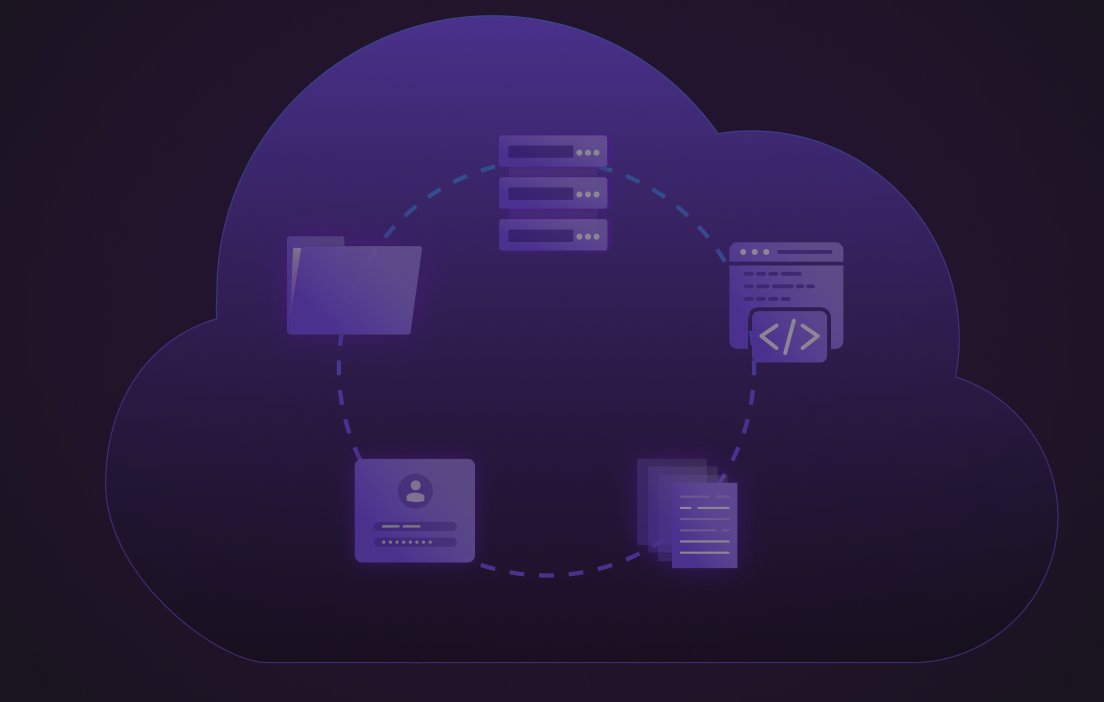With cloud usage at an all-time high, a key question has emerged: Is CSPM security enough to fully safeguard my sensitive business data?
Cloud security posture management tools are now an essential part of finding and addressing misconfigurations in cloud environments. These tools are good at infrastructure-level protection, but many are discovering that CSPM cloud security often falls short when it comes to protecting what matters most—the data itself.
In this post, we’ll take a look at what cloud CSPM is good at, where its blind spots are, and how combining security CSPM with deeper data-layer protection can give your organization a truly next-level secure cloud environment.
Read on to learn:
- What CSPM means for cloud cybersecurity.
- Why CSPM cloud security posture tools often leave critical gaps.
- The importance of protecting data during runtime.
- How to strengthen your CSPM cybersecurity stack.
What Is CSPM and Why Is It Critical for Cloud Security?
As the name indicates, cloud security posture management (CSPM) tools were built to solve a very specific problem: monitoring and managing the configuration of cloud environments. This, of course, becomes much more complex when organizations move to multi-cloud [source] or hybrid cloud architectures, making the risk of accidental misconfigurations skyrocket.
This is where CSPM cloud tools came into play. The idea is to constantly scan cloud accounts and look for risky settings such as:
- Overly permissive identity and access policies
- Unencrypted or publicly exposed data storage
- Non-compliant infrastructure configurations
- Unused or excessive privileges
A strong cloud CSPM solution can significantly reduce your exposure to cloud breaches caused by human error or poor security practices. In fact, in many ways, CSPM cybersecurity tools have become table stakes—the bare minimum—for operating securely in the cloud.
There is a catch, however. Even with a best-in-class CSPM cloud security platform, you could still be missing a big part of the picture: the security of the actual data stored and processed in those environments.
Where CSPM Tools Fall Short: The Data Layer
It’s important to grasp that CSPM security is all about how your cloud is configured, not what is happening to the data inside. So, while CSPM tools can tell you if your cloud resources are set up securely, they typically won’t let you know:
- Who is accessing your most sensitive data
- Whether that data is encrypted properly across all stages (at rest, in transit, in use)
- How data is being shared across apps, services, or business units
All of these create critical blind spots. The bottom line is that a CSPM tool won’t detect unusual data activity or track whether sensitive information is being used outside of established policy. We live in a world where data privacy regulations are tightening, and threats are becoming more sophisticated; this level of visibility simply isn’t enough.
Bridging the Gap with Data-Centric Security
To fully secure cloud environments, organizations are increasingly adopting a more data-centric security strategy that complements traditional CSPM. While CSPM focuses on infrastructure configurations, data-centric security shifts the lens to how data is discovered, classified, accessed, and protected throughout its lifecycle.
This approach often includes capabilities such as:
- Data discovery and classification: Identifying where sensitive or regulated data resides across cloud services.
- Access monitoring: Understanding which users or services are accessing data, and whether that access is appropriate.
- Policy enforcement: Ensuring encryption, tokenization, or masking policies are consistently applied to data in a way that meets compliance requirements.
- Anomaly detection: Detecting unusual access patterns that could indicate misuse or compromise.
- Security posture insights: Reports and dashboards correlate data security risks with overall cloud posture.
Rather than replacing CSPM, data-centric security augments it with a deeper and more complete picture. For example, while CSPM might flag a publicly exposed storage bucket, data-centric tools can tell you whether that bucket contains sensitive or regulated data, whether it's encrypted, and who accessed it. This layered approach helps organizations move from reactive alerting to proactive data protection.
The Case for Runtime Data Encryption
One of the biggest limitations of traditional security CSPM solutions is that they don’t deal with runtime security or protecting data while it’s actively being processed.
Most data protection strategies focus on encrypting data at rest (stored on disk) and in transit (moving between systems). Yes, it’s important to back up everything [source], but what about when an application is using the data? That’s when data is most vulnerable, but it’s also where most CSPM cybersecurity tools have zero visibility.
This can be solved with emerging technologies such as Confidential Computing, where data remains encrypted in a hardware-based secure enclave even while it's being processed. This means:
- Data is never exposed in memory
- Insider threats and cloud provider access are neutralized
- Sensitive workloads can run safely in untrusted or multi-tenant environments
This level of protection is especially critical for organizations in heavily regulated industries (healthcare, finance, government, etc.) where data privacy is non-negotiable.
Don’t Rely on CSPM Alone
Make no mistake, CSPM cloud solutions are vital to effective cloud security. They help you recognize misconfigurations, alert you to potentially risky settings, and enforce policies at the infrastructure level.
But if your business data is sensitive, regulated, or central to your operations (and let’s face it, whose isn't?), then you need more than just cloud CSPM tools. You need a full view of how your data is accessed, protected, and used. You need runtime protection. You need data-first security.
Fortanix allows you to:
- Discover, classify and prioritize sensitive data across cloud environments
- Enforce encryption and policy-based controls at the data level
- Protect data not only at rest or in motion, but while it’s being used
In the end, CSPM cybersecurity gives you a nice foundation. Fortanix builds you a fortress.
Ready to see how Fortanix can boost your cloud CSPM strategy? Request a demo or start a free trial and take control of your cloud data security.










